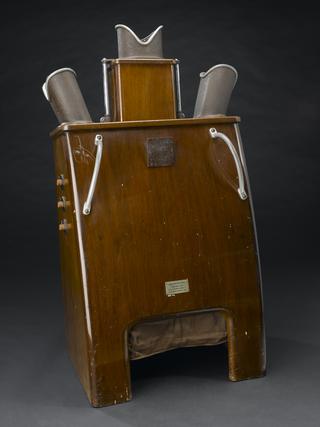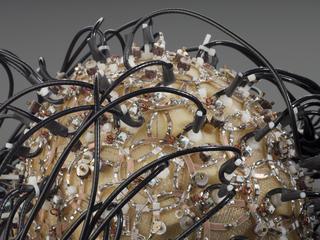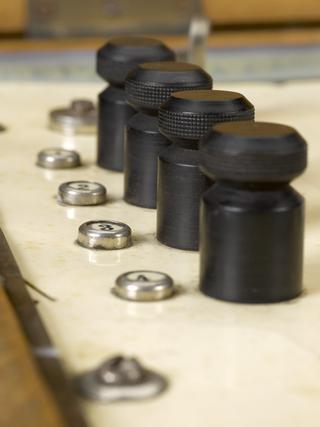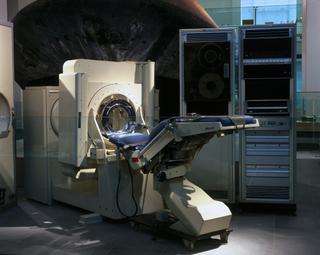Control unit for cineradiography set
Control unit for cineradiography set
More
Russell John Reynolds was an internationally renowned radiographer and specialist in the field of cineradiography (moving image X-ray films). While still at school, he – with the assistance of his GP father and physicist Sir William Crookes – constructed a fully functioning X-ray machine just months after German scientist Wilhelm Röntgen first described the ‘new type of ray’ in late 1895.
Qualifying as a doctor in 1907, he spent two years in general practice before becoming a full-time radiologist, going on to serve with the Royal Army Medical Corps during World War I. In 1921, he was appointed physician-in-charge of the X-ray departments of Charing Cross and the National Hospitals where he began tackling the challenge of creating X-ray films of moving body parts.
At the time, there were two possible ways of producing cineradiographic films. The ‘direct’ method, as the name suggests, recorded X-ray images directly onto cinefilm. As X-rays could not be focused, film strips had to be as wide as the body part being X-rayed. To capture adult chest movements, for example, a reel 15 inches wide by 120 feet long would be needed.
Reynolds favoured the ‘indirect’ approach, also known as cinefluorography: recording live X-ray images from a fluorescent screen. This tactic presented its own challenges, namely producing a bright enough image to show up on film without exposing the patient to harmful levels of radiation. Reynolds constantly modified his techniques to reduce the exposure times needed. By 1925, he had introduced a switch to automatically cut off the X-ray tube while the camera shutter was closed.
Within a decade, Reynolds had filmed almost all the body’s joints at speeds of up to 12 frames per second and persuaded optical instrument maker W. Watson and Sons to develop the first commercial cineradiography machine. Cautious about profitability, the company adapted existing equipment to create the outfit – the camera base, for example, is a modified dental chair. Reynolds continued to experiment in subsequent decades, achieving films of 50 frames per second, ‘slow motion’ imagery of the heartbeat and barium meal examinations of the intestines.
- Measurements:
-
overall: 937 mm x 450 mm x 429 mm, 102 kg
- Object Number:
- A639410 Pt1
- type:
- radioactive material and control panels





